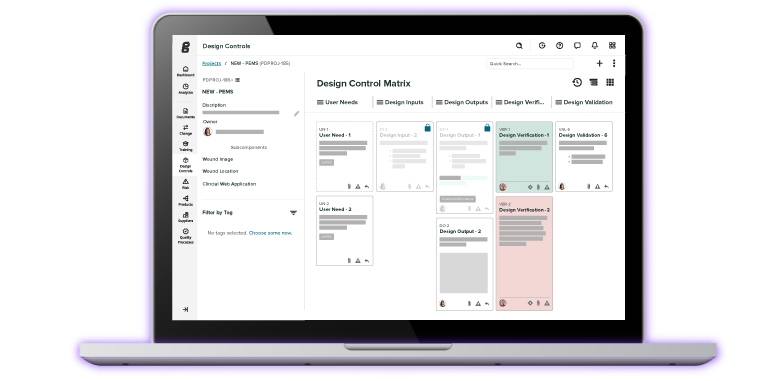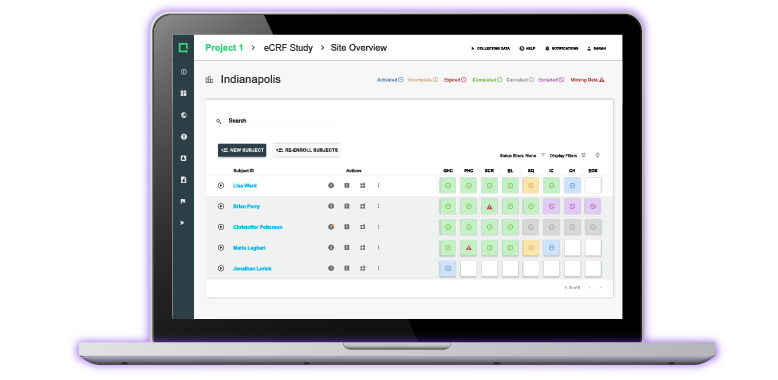3 Insights on MedTech Product Development from an Ex-FDA Investigator

Have you ever wondered what your MedTech company looks like from the point of view of an FDA investigator? Well, this is your chance to find out.
We invited Vincent Cafiso, a former FDA investigator, onto the Global Medical Device Podcast to share his experiences from three decades of working in MedTech. After leaving FDA, Vincent worked as a quality engineer and then moved into consulting. His current role is Director of Quality and Regulatory Services at Creo Consulting, so it’s fair to say he’s just about seen it all.
It’s well worth listening to the entire conversation, but in this blog, we’ve pulled out three major pieces of advice that Vincent would give any MedTech company from his wealth of experience.
1. Build a foundation of regulatory knowledge
One thing Vincent has noticed over the years is that MedTech companies often have more data on their designs than they actually document in their design history file (DHF). Sometimes, the lack of documentation is simply a matter of companies trying to do the least they can to meet the regulations or standards. But other times, he’s noticed there is a lack of knowledge about what needs to be documented or the tests that need to be performed during design and development.
That really is a problem, because MedTech professionals need to be fully versed in the regulations and standards that apply to their business. It’s impossible to be truly excellent in MedTech without strong foundational knowledge of regulatory requirements.
Think of it like building a house. Once you put your foundation in place, there are all kinds of interesting and creative ways to construct the rest of the home. But if that foundation is not solid, then it doesn’t matter if the rest of the house is an architectural marvel—you will have problems with it.
The advice here is simple, but can be revolutionary: to the best of your ability, ensure everyone on your team understands the regulations and standards that apply to your product and can easily reference them.
2. Align R&D and production as much as possible
Another issue Vincent sees in many MedTech companies is their tendency to put a wall between R&D and production. Initially, this is great for R&D, because they get to tinker and experiment until they find something that works. But it leads to trouble down the road.
That’s because regulatory requirements do apply to R&D activities. And if you want to use the data from those activities, then you have to perform them in a compliant manner. What Vincent has found, both as an investigator and as a consultant, is that R&D teams do a lot of great work and will even document it. The issue is with the usability of their data. Often, the tests they document aren’t performed in a controlled environment. Or they can’t establish traceability for the products they used. Or the equipment wasn’t calibrated or on a preventative maintenance schedule.
Whatever the specifics, the result is the product development team then has to recreate everything that was done in R&D in order to properly document it. Not only does that double the work involved, it can also lead to tricky situations in which product development can’t replicate what happened in R&D (possibly because it didn’t happen in a controlled environment).
Vincent advises companies to avoid all of this by aligning their R&D with production and quality control and ensuring the R&D environment is the same as the environment where the products would be tested by quality control. This could mean using gowning, PPE, a clean room, calibrated equipment on a routine preventative maintenance schedule, etc.
It may seem like a lot of work, but as is so often the case, taking the time upfront will save you even more time later on.
3. Break down siloes for cross-departmental collaboration
When companies are small, there tends to naturally be a lot of cross-functional collaboration. The quality team may sit a few feet away from product development or marketing. There’s a natural sense that everyone is in it together, and that leads to a lot of cross-departmental conversations and collaboration.
As companies grow, however, it’s easy to lose that collaborative, startup spirit. Walls start to emerge between departments and it’s harder to find the right person in another department, schedule time with them, and get any work done together.
Vincent has seen this happen over and over again, and it leads to his last piece of advice: break down siloes.
You’re all in this business to create amazing, life-changing products, and that simply can’t be done when there are walls between departments. There has to be collaboration, and if you sense that your company is missing that collaboration, you need to make an individual effort to break down walls and increase cross-functional interaction.
Honestly, you’ll find that people want to help when you ask for it. You may occasionally run into a cranky colleague in another department who drags their feet, but more often than not, you’ll be surprised at how willing to help people are. It’s just that as companies grow, people tend to naturally lose touch with other departments and stop nurturing those relationships.
Greenlight Guru is your single platform for compliant and collaborative design and development
At Greenlight Guru, we understand the issues that Vincent pointed out because our software was built by and for MedTech professionals. We took hundreds of years of collective industry knowledge and used it to build QMS software that reduces barriers to collaboration and simplifies documentation and compliance.
Greenlight Guru Quality is the tool your team needs to ensure a collaborative design and development process, keeping R&D, quality, and product teams connected and working with a single source of truth.
With Greenlight Guru, you’ll have a design controls workspace that allows you to maintain traceability through an iterative design process and automatically generates and updates your DHF. You’ll also be able to bring the team together to document and approve design reviews with full visibility of your design matrices. And it all happens in software that’s validated per FDA and EU regulations, as well as standards like ISO 13485:2016 and ISO 14971:2019.
Ready to see what an intuitive, purpose-built QMS can do for your business? Then get your free demo of Greenlight Guru today!
Etienne Nichols is the Head of Industry Insights & Education at Greenlight Guru. As a Mechanical Engineer and Medical Device Guru, he specializes in simplifying complex ideas, teaching system integration, and connecting industry leaders. While hosting the Global Medical Device Podcast, Etienne has led over 200...
Related Posts
3 Tips for Planning a Successful Product Development Project for Your Medical Device
30/60/90 Day Plan to Making an Impact as a Product Development Engineer
Complete Guide to Bringing a Medical Device to Market
Get your free Template
Content Toolkit for Product Development
.png?width=250&height=321&name=content%20toolkit%20cover%20-%20PD%20copy%20(1).png)

.png?width=1150&name=content%20toolkit%20cover%20-%20PD%20copy%20(1).png)







